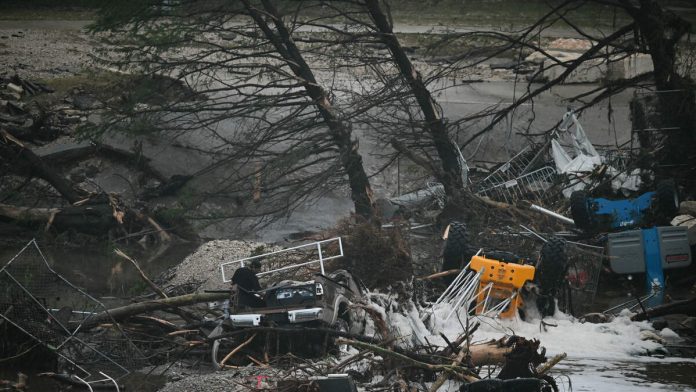The recent flash flood in Central Texas has resulted in nearly 80 fatalities, with many more people still missing. The Guadalupe River surged over 20 feet in just a few hours, devastating the region known as “Flash Flood Alley.” This tragic event raises questions about the potential for similar disasters in California, where extreme weather events are becoming more common due to climate change.
According to the Los Angeles Times, the Texas flood was caused by an intense, localized downpour that is becoming more frequent due to global warming. The National Weather Service had issued multiple warnings, but the scale of the flood was unprecedented. The Trump administration’s budget cuts to the National Oceanic and Atmospheric Administration (NOAA) and the National Weather Service have raised concerns about the ability to predict and respond to such events in the future.
In California, areas like the coastal mountain basins and the Sierra Nevada foothills are identified as flash flood hot spots. The state’s vulnerability to flash floods is compounded by reduced federal support for weather forecasting and emergency response. CNN reports that the federal government has shifted the burden of disaster response onto states, which could leave California ill-prepared for similar disasters.
The Texas Hill Country, where the recent flood occurred, is one of the deadliest places in the U.S. for flash flooding. KLAS highlights the region’s geography, which funnels water quickly into rivers, creating dangerous surges. California’s geography presents similar risks, particularly in areas with steep hills and inadequate drainage systems.
The recent Texas flood has sparked discussions on the need for improved flood forecasting and emergency response strategies. Experts suggest that probabilistic forecasting, which provides a range of rainfall scenarios, could help authorities prepare for worst-case situations. Education is also crucial, especially for drivers, as many flood-related deaths involve vehicles.

Recent Comments